Exploring the intersection of spaceflight history, pop culture, and space art.
Although throwing away rockets after one use had historically been standard practice from the start, rocket and spacecraft reusability is by no means a new idea. This edition of Creating Space takes a look back to the early days when spaceflight engineers were thinking about recovering and reusing flight hardware in some very creative ways.
Are you new to Creating Space? It’s the NERDSletter that explores the intersection of spaceflight history, pop culture, and space art. You can find this and all other posts at creating-space.art.
Retro Rocket Reusability
SpaceX has made rocket and spacecraft reusability commonplace, but the road to get to this point dates back to the 1950s. Let’s take a look back in time to those early free-thinking days when spaceflight engineers recognized the value of recovering and reusing flight hardware and were proposing a variety of methods of doing so.
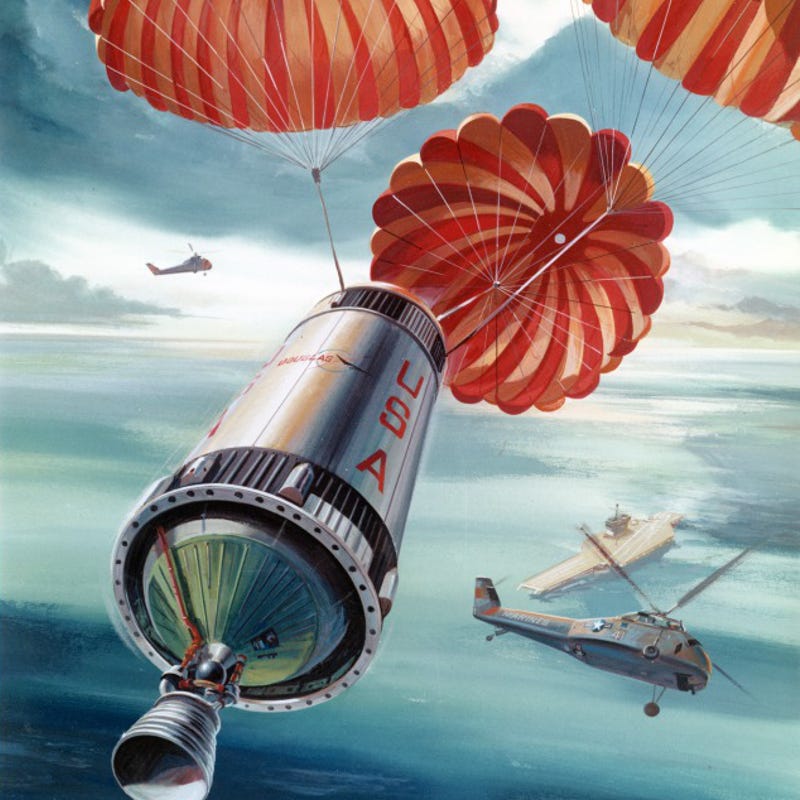
The Throw-Away Space Society
When Alan Shepard was in his Freedom 7 Mercury capsule waiting for the “GO for launch” call, he famously implored the launch team in the blockhouse to “light this candle”. And, just as with a candle, once the Redstone rocket was launched and its fuel was exhausted after it had done its job of lofting Shepard into his suborbital trajectory, the booster was unceremoniously discarded.
In today’s throw-away society, this might seem quite normal. Indeed, for the decades to follow, it became an expected part of any rocket launch. The Atlas boosters used in the final four Mercury flights were also left to fall into the ocean. The Titan II’s two stages of the Gemini program were similarly discarded. And the Apollo Saturn IB boosters, as well as most of the Saturn V stages, also dropped to a watery demise after they lofted their payloads spaceward. The Saturn V third stages that sent astronauts to the Moon were either purposefully crashed into the lunar surface or sent on an endless voyage around the Sun. When it came to launch vehicles “one and done” was the accepted way to go.
However, within the most recent decade, a new generation of space companies have reversed this wasteful and costly aspect of booster operations. The most notably successful of those new space companies is, of course, SpaceX.
Before I devote space for discussing SpaceX, it is worth putting their achievements into historical context.
Recovering Space Vehicle Engineers
Rocket and spacecraft reusability is by no means a new idea. A number of U. S. space programs either had plans to reuse key hardware components or actually did so.
The U.S. Air Force’s 1963 Manned Orbiting Laboratory (MOL) proposal was designed to use – and reuse – a specially modified Gemini capsule, designated Gemini B. A hatch was integrated into the spacecraft’s heat shield to permit access into the laboratory portion of the MOL configuration. In 1966, A test capsule which was previously flown on the Gemini 2 unmanned test flight was launched atop a Titan IIIC rocket, together with a mockup laboratory, from Launch Complex 40 on Cape Canaveral. The repeat flight was a success and the new Gemini B became the first capsule to fly in space twice.1
When the Apollo boosters were still on the drawing boards, designers studied methods to recover and reuse parts of the launch vehicles in some very creative ways.
This Army Ballistic Missile Agency (ABMA) illustration from October 1958 shows a Juno V – a precursor to the Saturn family of rockets – parachuting to a gentle water landing with the help of several braking rockets.
Here is dry-land recovery concept using a deployable Rogallo wing to retrieve an early Saturn first stage booster. This image likely originated from one of the 1961 studies by the Ryan Aeronautical Company or North American Aviation.2
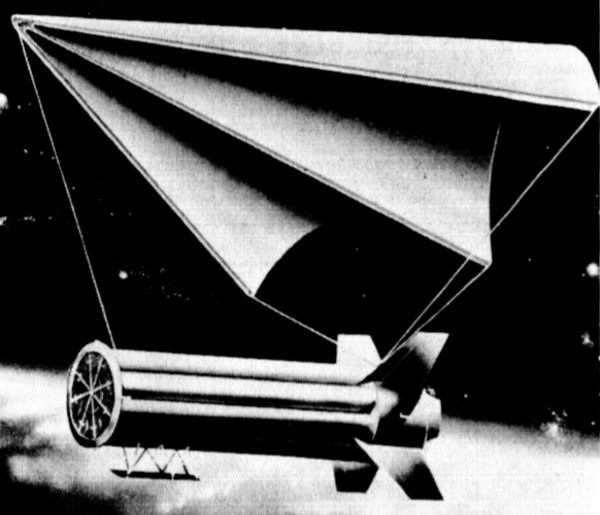
In 1965, Boeing was looking at the possibility of recovering the massive Saturn V first stage booster after an ocean splashdown by way of parachutes.
One study for recovering the Saturn booster stages included deployable landing legs for dry landings. SpaceX, of course, ended up turning this idea on its head – or, rather its tail – and accomplished it without the need for parachutes.
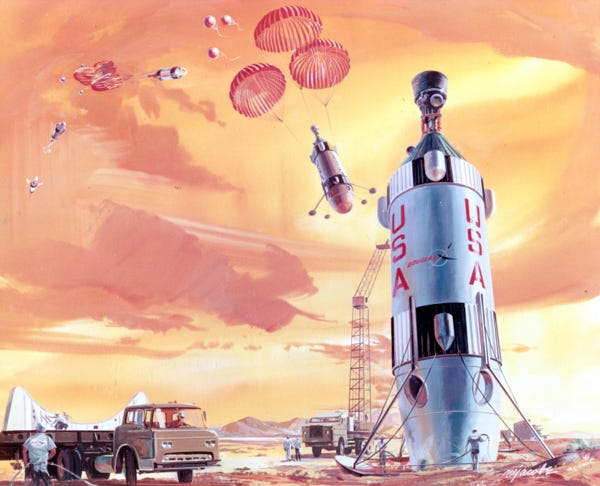
While parachute recovery became commonplace in the Space Shuttle program, these next ideas might seem a little more “out there”.
The Hiller Aircraft Company of California wasn’t satisfied with letting the stages float all the way to the ground or the ocean, possibly unguided, by parachute. Instead, they proposed using a giant helicopter, a so-called Air Tug, to catch a parachute-descending Saturn V first stage in mid-air and save it from a salt-watery dunking. This 3D animated simulation of the Hiller concept in action is a must watch!
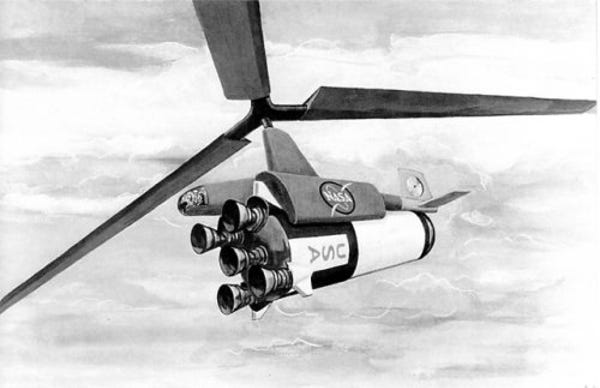
Bell Aircraft Corporation apparently decided that combining the helicopter with the rocket stage was the way to go, making for this rather bizarre-looking contraption.
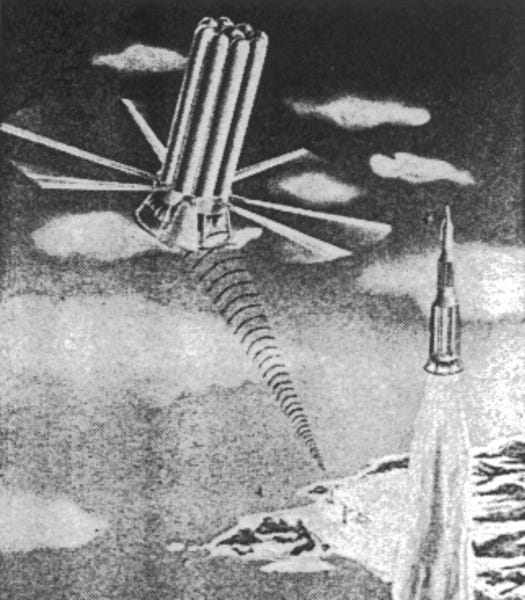
If a “Space Chopper” doesn’t seem odd enough to you, maybe this 1962 Douglas Aircraft Company concept for a Reusable One-stage Orbital Space Truck (ROOST) will raise your eyebrows. As stated in its name, this was an idea for a reusable single-stage booster. The plan was to employ an elaborate inflatable cone to protect the vehicle’s return to Earth. It would be able to endure the scorching heat of reentry with the help of advanced materials in the drag cone.

Once the odd-looking assembly reached a certain point in the atmosphere, hydrogen gas would be produced by ignition of liquid oxygen and liquid hydrogen and directed into the inflated cone to make the entire assembly aerostatically buoyant.3 A gentle landing into the sea to awaiting recovery ships would complete the flight portion of the mission.
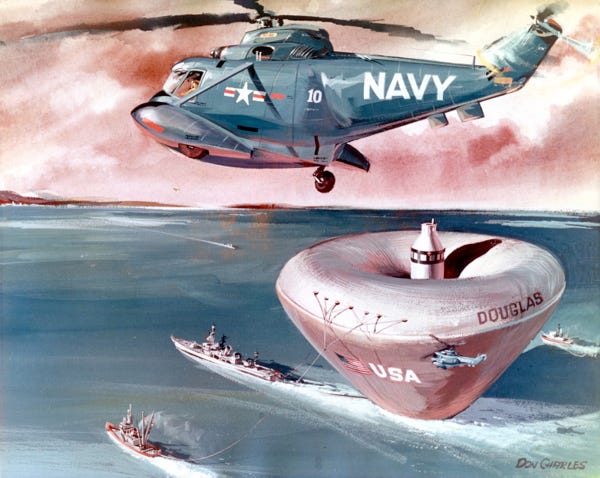
The Space Shuttle Program, which had its first flight in 1981, reused the Orbiter, of course, including its three main engines and Orbital Maneuvering rocket engines. The solid rocket boosters were recovered and refurbished after they descended into the ocean by parachutes. Only the external fuel/oxidizer tank was discarded.
But, the earliest designs for the space shuttle called for a fully reusable system made up of a flyback booster and a winged orbiter. Here is one such concept from General Dynamics.
While a fully reusable orbital space transportation system has yet to be realized, several new space companies are making strides toward that long-sought-after goal.
Blue Origin has successfully operated its fully reusable suborbital spacecraft, as well as its booster rockets. Blue Origin has also been steadily working on their orbital New Glenn, its first stage designed to be recovered and reused.
Virgin Galactic’s approach to suborbital reusability foregoes the booster rocket and parachute recovery in favor of wings on both its carrier aircraft and its winged passenger spacecraft.
SpaceX maintains a commanding lead in orbital rocket reusability. It has been successfully flying and recovering their Falcon-class first stage boosters since 2015.4 They have been reusing the payload fairings since 2021.5 And, the Dragon crew and cargo vehicles have been reused since 2019.6
With their Starship, SpaceX aims (as of this writing) to succeed in achieving full orbital booster and spacecraft reusability.

So, the days of discarding rockets after a single use appear to be coming to an end, if not entirely then certainly for the main new players in the spaceflight industry.
In an upcoming post, I will take you inside the facility where SpaceX refurbishes their Falcon first stage boosters and their payload fairings.
Merch of the Month
Globe and Rocket Acrylic Block
Impress your friends over and over with this beautiful custom acrylic block print of a whimsical silver rocket orbiting our familiar globe.
As a special thank-you for reading Creating Space, I am offering a discount on my artwork. Simply use code CREATINGSPACE15% for 15% off your entire order from the Pixel Planet Pictures shop.
My space-inspired art portfolio can be found at pixel-planet-pictures.com. You can also follow me on Instagram (pixelplanetpics).
Do you know fellow Space Geeks who might enjoy Creating Space? Invite them into this space, too!
Did you miss a post? Catch up here.
If you enjoyed this article please hit the ‘Like’ button and feel free to comment.
All images and text copyright © Dave Ginsberg, unless otherwise noted. All rights reserved.
The Fascinating Concepts of Advanced Gemini, Spaceflight Histories, Aeryn Avilla
Cluster’s Last Stand: The Saturn I/1B, The High Frontier, Chris B. Petty
Reusable One-stage Orbital Space Truck (ROOST) (1962), No Shortage of Dreams, David S. F. Portree
List of Falcon 9 first-stage boosters, https://en.wikipedia.org/w/index.php?title=List_of_Falcon_9_first-stage_boosters&oldid=1242741758 (last visited Aug. 29, 2024).
SpaceX fairing recovery program, https://en.wikipedia.org/w/index.php?title=SpaceX_fairing_recovery_program&oldid=1236713178 (last visited Aug. 29, 2024).
SpaceX Dragon 2, https://en.wikipedia.org/w/index.php?title=SpaceX_Dragon_2&oldid=1242855677 (last visited Aug. 29, 2024).


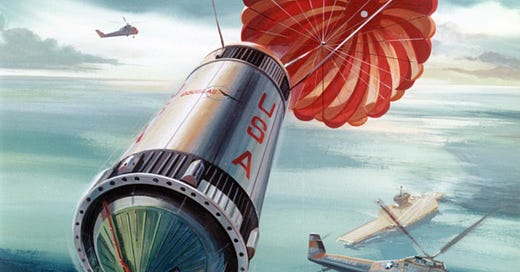




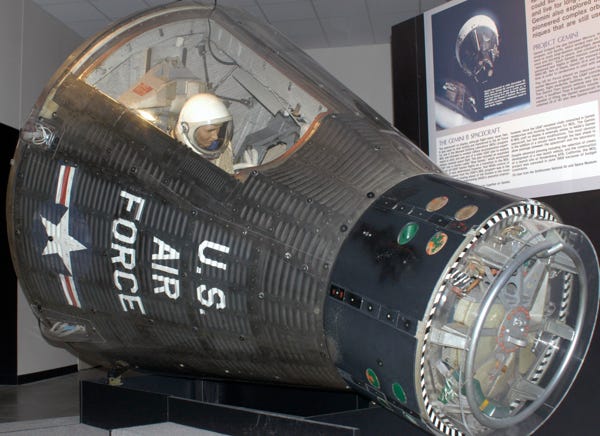
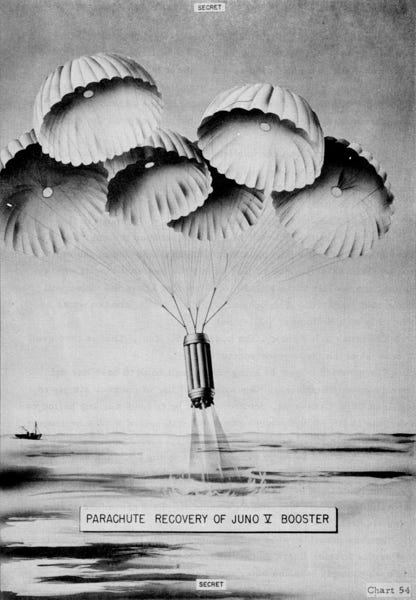










Great article. This was a topic I did not know much about before so very informative. I really enjoy the art you use to illustrate the different sections.
I think this is your best yet Dave - I'm a fan of the Hiller Helicopter, but that video is new to me.
I think they may have one thing wrong though - the rotor tips had rocket engines in the tips, with fuel flowing down the rotors. They were barely subsonic, and the movement seems too slow to me.
Still a stunning piece of work.